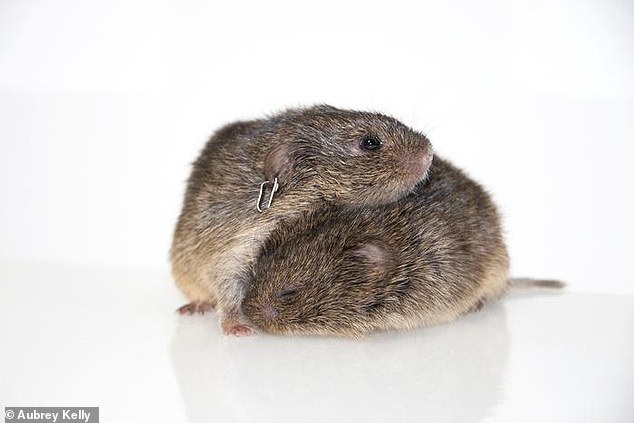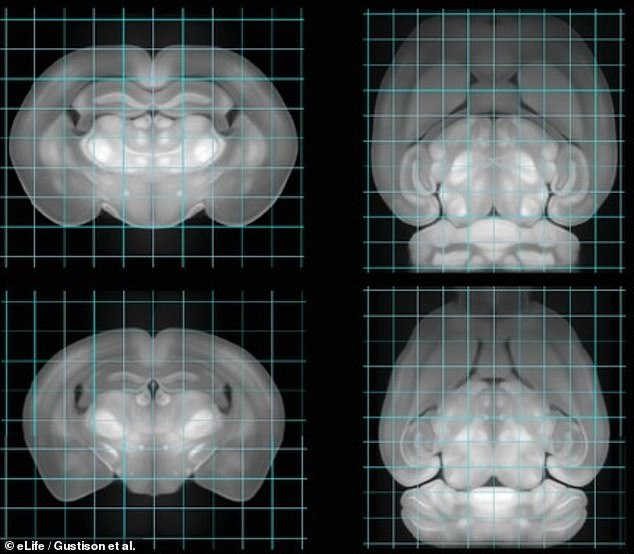Scientists discover how orgasms rewire the brain and lead to lasting connections between partners
They say sex is the key to a happy marriage – and now science suggests that’s true.
According to new research, orgasms rewire the brain in a way that promotes long-term bonding.
A team of researchers from the University of Texas at Austin and Cold Spring Harbor Laboratory mapped the brains of male and female voles during their three stages of courtship: mating, bonding and “continual bond maintenance.”
They found that during these stages, 68 different brain regions underwent significant changes, rewiring and forming new connections.
Both members of a pair showed similar brain changes, and the biggest changes appear to occur when the male has an orgasm.
This could mean that orgasms promote connection beyond just sex, something scientists think applies to humans as well.
Experiences change the brain, creating new connections between neurons and pruning old ones. Scientists use the field mouse as a model for exploring the neuroscience of sex and love because it forms lifelong bonds.

Sex can be more than just an extra in long-term relationships. New research on voles suggests that sex is an important part of reshaping the brain to support lasting connection.
These changes could reflect evolutionary adaptations that increase survival chances because a bonded couple has better chances of successfully raising their shared babies.
‘The brain and behavioral data suggest that both sexes may have an orgasm-like response, and these ‘orgasms’ coordinate bond formation,’ said study author Steven Phelps, professor of integrative biology at UT Austin, in a rack.
“If true, it would imply that orgasms could serve as a means of promoting connection, as has long been suggested in humans.”
Researcher saw that the most important predictor of these changes was male orgasm, which appeared to influence brain changes in both men and women.
In other words, the more the man orgasmed, the more profound the rewiring of his and his partner’s brains. They couldn’t tell when or if the females had an orgasm.

Prairie voles form lifelong bonds. A bonded pair will comfort each other when stressed, defend their shared territory, and raise young together.
The study used prairie voles, a type of rodent that has become an unlikely scientific window into how the brain handles sex and love.
These small, North American animals form lifelong pairs, so scientists use them to study the neuroscience and behavior of monogamy.
Of course, not all people are monogamous.
But studies have shown that both prairie voles and humans express oxytocin, which has been dubbed “the love hormone” for its role in bonding, both between romantic couples and between mother and child.
In the new study, scientists started with voles that had never mated, to ensure that their brains were a clean slate sexually.
The team used wild-caught voles, a strategy that more and more laboratories have adopted in recent years and that may help avoid some of the reproducibility problems associated with inbred laboratory animals.
After giving female voles a hormone injection to ensure they were in heat, scientists paired them with males.
About 200 field mice were paired up and scientists carefully observed their behavior and recorded everything the animals didincluding mating, grooming and even orgasm.
When the animals were about ten weeks old, they were euthanized and the researchers preserved their brains.
They mapped all the connections within them and then performed statistical analyzes to link their behavior to what they observed in the brain.
Previous research has suggested that sex hormones such as estrogen and testosterone, which are not the same between men and women, play an important role in bonding and sex.
But there was no significant difference between the brains of men and women, the researchers reported.

Scientists used light-sheet fluorescence microscopy (LSFM) to examine the brains of voles after forming pair bonds. They found that many areas were involved, areas not previously known to be related to sex and bonding.
“That was a surprise,” Phelps said.
‘Sex hormones such as testosterone, estrogen and progesterone are important for sexual, aggressive and parental behavior, so the prevailing hypothesis was that brain activity during mating and bonding would also be different between the sexes.’
What they did find was that many areas that changed during bonding were not previously known to be related to bonding.
In fact, they identified 68 brain regions that had formed new connections during the couple’s bonding process.
The research was published in the journal eLife.
Voles are known to form pair bonds quickly, moving from strangers to partners within a day.
And sex is a crucial part of this bonding process, the researchers discovered.
Often within the first 30 minutes of meeting, a male and a female vole will start having sex, and they will continue to do so repeatedly.
During this time they form a bond that often lasts a lifetime.
A bonded pair of voles will groom each other, raise young together, comfort each other when stressed, and defend their shared territory and young.
